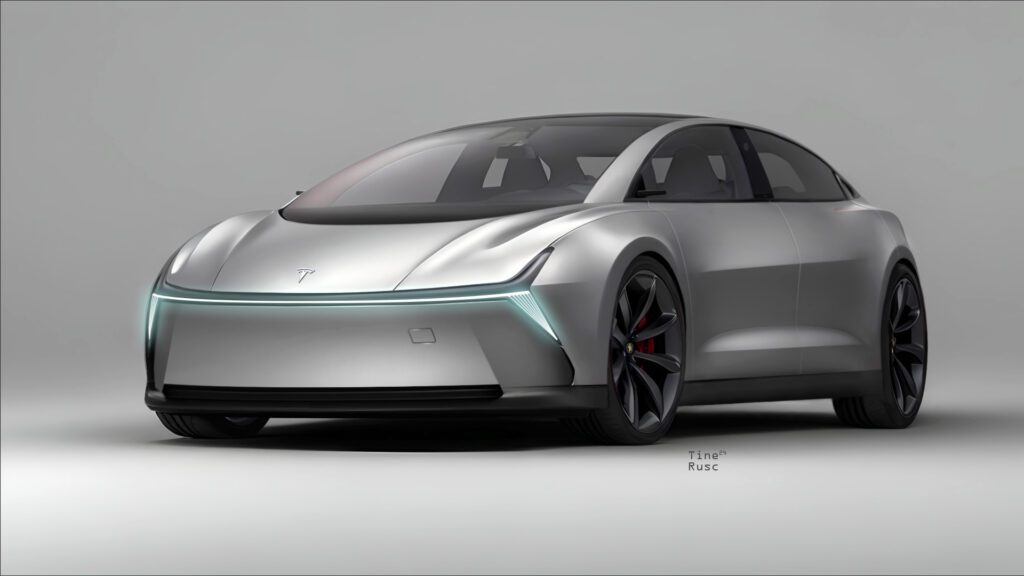In a groundbreaking announcement during the Q4 2023 and Full Year 2024 Earnings Call, Elon Musk shared that Tesla’s next generation vehicle is on track for production in the latter half of 2025. This significant development not only marks a new chapter for the electric car giant but a lso signals a strategic move towards making electric vehicles more affordable.


The Blueprint for Tesla’s Next-Gen Vehicle
Amidst the buzz surrounding the supposed codename “Redwood,” concrete details about Tesla’s next-generation vehicle remain elusive. While the concept of a Robotaxi-based vehicle without human controls has been on Tesla’s agenda, the primary focus appears to be on affordability, representing a pivotal shift in the company’s strategy.
Short-Term Challenges and Growth Strategies
Acknowledging the imminent short-term challenges, Tesla anticipates a ‘notable’ hit on its volume growth rate. This revelation comes from the Q4 2023 and Full-Year Earnings Shareholder Deck, where Tesla outlines the transitional phase between two significant growth waves: the global expansion of the Model 3/Y platform and the upcoming wave initiated by the global expansion of the next-generation vehicle platform.
Gigafactory Texas: A Hub for Innovation
Tesla’s commitment to revolutionizing the automotive industry is exemplified by the role of Gigafactory Texas. Positioned as the production hub for the next-generation vehicle platform, Gigafactory Texas is poised to redefine how vehicles are manufactured. This strategic move underscores Tesla’s relentless pursuit of innovation and progress.
Challenges on the Horizon – Elon Musk’s Perspective
Despite the promising future, Elon Musk doesn’t shy away from acknowledging the challenges ahead. Drawing parallels with the Model 3 ramp-up, Musk envisions a demanding road ahead for the production of the next-generation vehicle. In a bold statement, he suggests that employees may find themselves literally “sleeping” on the production lines during the manufacturing phase.
Conclusion
In conclusion, Tesla’s next-generation vehicle heralds a paradigm shift in the electric vehicle landscape. The strategic emphasis on affordability, coupled with Gigafactory Texas as an epicenter of innovation, positions Tesla at the forefront of reshaping the future of sustainable transportation. As challenges are confronted and innovations realized, the electric car giant gears up for a transformative journey into the future.
ALSO READ :-
Tesla Supercharger V3 Sparks Surge in Australia’s Electric Vehicle Charging Network Expansion
Susanna Gideonsson Resigns Amidst Tesla Clash
SOURCE : TESLARATI
FAQs
When is Tesla planning to start production for its next-generation vehicle?
Tesla has officially announced that production for the next-generation vehicle is scheduled to commence in the latter half of 2025. This revelation came during the Q4 2023 and Full Year 2024 Earnings Call.
What is the primary focus of Tesla’s next-generation vehicle?
While specific details are yet to be unveiled, there are indications that Tesla’s next-gen vehicle is geared towards enhancing affordability. This strategic move aims to make electric vehicles more accessible to a wider audience.
How does Tesla anticipate short-term challenges in growth during this transition?
Tesla acknowledges a potential ‘notable’ hit on its volume growth rate in the short term, as outlined in the Q4 2023 and Full-Year Earnings Shareholder Deck. This period is considered a transitional phase between two significant growth waves.
What role does Gigafactory Texas play in Tesla’s next-generation vehicle production?
Gigafactory Texas is poised to be the primary production hub for the next-generation vehicle platform. Tesla aims to revolutionize vehicle manufacturing processes, showcasing its commitment to innovation and progress.
How does Elon Musk foresee the challenges in the production of the next-generation vehicle?
Elon Musk, Tesla’s CEO, anticipates a challenging road ahead for the production of the next-gen vehicle. Drawing parallels with past experiences, Musk envisions potential difficulties, even suggesting that employees might find themselves “sleeping” on the production lines during manufacturing.
